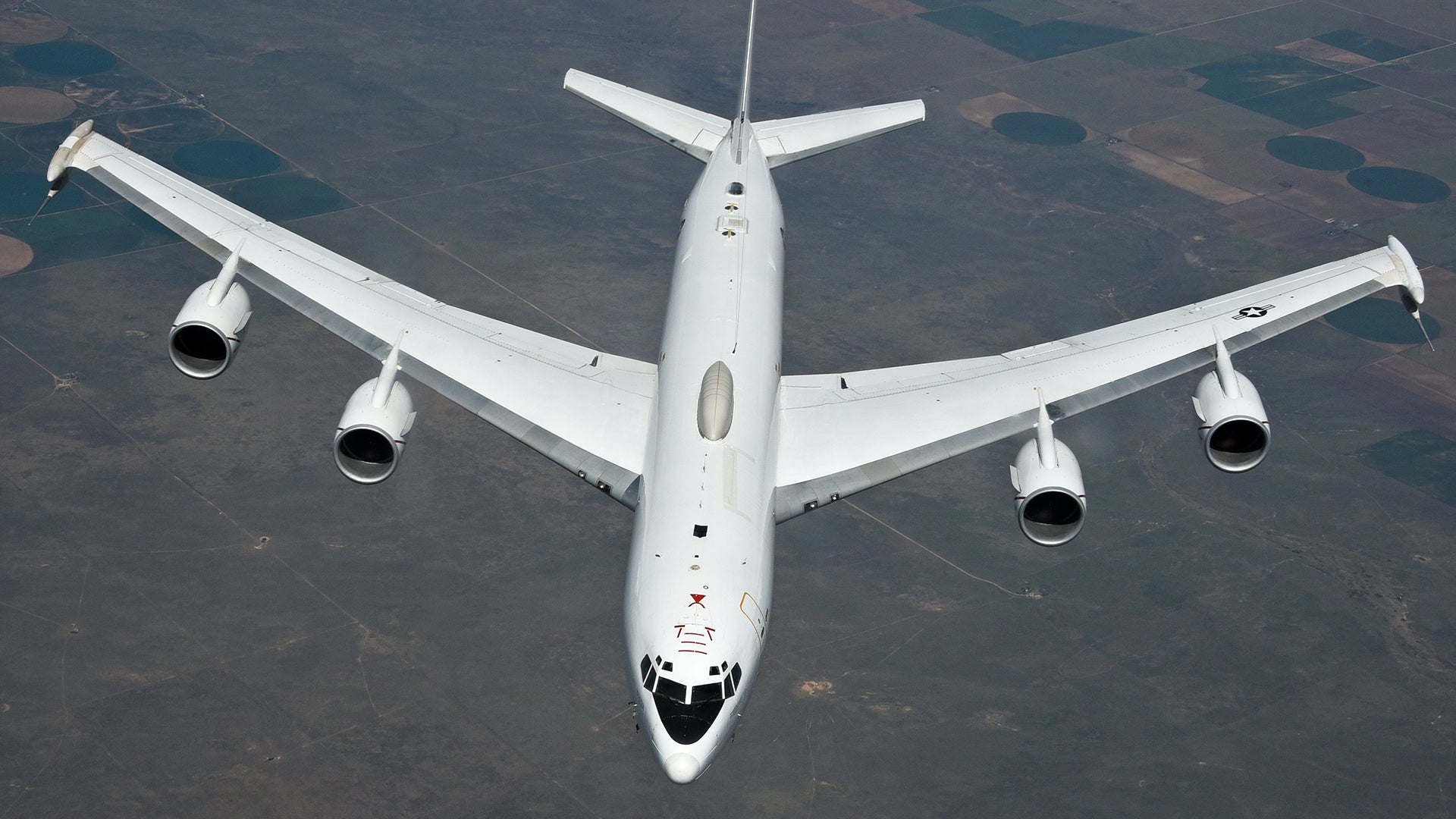The E-6B Mercury that executes the “Take Charge And Move Out” (TACAMO) mission for America’s sprawling nuclear apparatus, basically delivering commands from the National Command Authority that can send nuclear-armed ballistic missiles flying during a nuclear apocalypse, is an incredible aircraft. Not only were they among the last Boeing 707 derivatives ever built, but they are also packed full of EMP hardened systems and highly skilled crews that would literally hold the world as we know it in their hands during a major crisis. Although advanced and highly secure satellite communications and line-of-sight data-links are critical parts of their capability set, a far more cumbersome system is used to talk to ballistic missile submarines hiding deep below the waves. The deployment of this fascinating capability was caught today by a plane tracker that was monitoring an E-6B operating off the coast of New Jersey.
The Very Low Frequency (VLF) communications system can pierce the ocean’s surface down to about 60 feet to connect with submarines lurking in the planet’s vast undersea environment. A downside to this capability is that data transfer rates are appallingly slow, so only very simple communiques, like Emergency Action Messages, can be transmitted, and huge antenna arrays are required to both send and receive those messages.
The E-6B’s primary VLF antenna is just over five miles long. It also has a shorter one that is deployed via a trapdoor arrangement in its tail. The VLF antennas are stabilized with a drogue on its trailing end. The idea is to get the antennas as close to vertical as possible for maximum transmission effectiveness. This is done by putting the aircraft into a very steep and tight banking turn at slow speed and above 20,000 feet, not far above the aircraft’s stall speed. These turns are repeated, oftentimes for hours at a time, as messages are sent.

A submarine trails its own long VLF antenna to receive the transmission. If the submarine is too deep to receive the signal, the VLF antenna can be floated to a shallower depth via a buoy while the submarine remains underway at greater depth.
This maneuver is precisely what was spotted today by one eagle-eyed aircraft tracker and open-source intelligence enthusiast, @vcdgf555. An E-6B was operating off the northeastern coast of the U.S., hundreds of miles out to sea, and executing a VLF communications deployment maneuver. This track gives us a great visual portrayal of what such a maneuver looks like:
Submarines can receive many more forms of communication when they are at periscope depth, but for the boomers, the nuclear ballistic missile submarines that must stay hidden in order to assure the strategic second-strike deterrent, exposing themselves in such a manner isn’t really an option in many cases. Even releasing satellite communications buoys that are tethered to the submarine and float to the surface can increase the submarine’s chances of detection to unacceptable levels.
VLF messages can be transmitted far over the horizon from ground stations as well. The U.S. Navy maintains a number of these facilities just for that purpose, but in a nuclear exchange, they would be some of the first targets struck. As such, the E-6B’s ability to use the same form of communication during a nuclear exchange is absolutely essential. They could quite literally be the last node on earth capable of distributing such orders.

It’s worth noting that the Air Force’s E-4B Nightwatch National Emergency Airborne Command Post aircraft also have VLF antennas that work in a similar fashion if need be, although conveying launch commands to the Navy’s ballistic missile submarine fleet is not their primary mission as it is for the E-6Bs. Yet the E-6Bs are also multi-role platforms and share other capabilities with the E-4B. With so much connectivity at their fingertips and having a highly trained team that can give everything from strategic nuclear attack advice to providing global weather forecasting, they can also act as command posts for many types of contingencies, from taking the National Command Authority aloft and executing a nuclear war to providing assistance after natural disasters.

E-6Bs have participated in FEMA exercises in the past and they can provide a lot of important capability without even leaving the ground. This can be absolutely critical to officials responding to a crisis in an entire region cutoff from normal communications infrastructure.

The Mercurys and their VLF communications capabilities are just pieces of the bewildering infrastructure puzzle that rose up and evolved after nuclear weapons became a reality. The best overview of this incredible phenomenon is the book Raven Rock. Check out our interview with its author, Garrett Graff, here.
It’s amazing to think that at any given time there is a portion of the 16 E-6B strong fleet either already in the air or sitting alert at places like Travis AFB in California and NAS Patuxent River in Maryland, as well as other far less predictable locales around the globe, ready to spring into action at a moments notice. Their primary job is an incredibly dark one. If called upon, they would directly facilitate the end of the world. But the fact that they are so capable of suddenly carrying out that mission ensures that they won’t ever actually have to.
With all this in mind, the E-6B is truly one of the most important and fascinating aircraft types on earth and it does its job with a bit of aerobatic flair.
Contact the author: Tyler@thedrive.com
